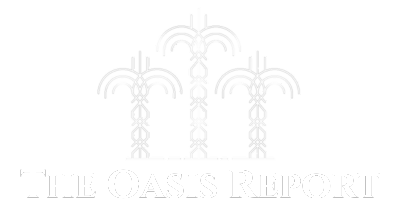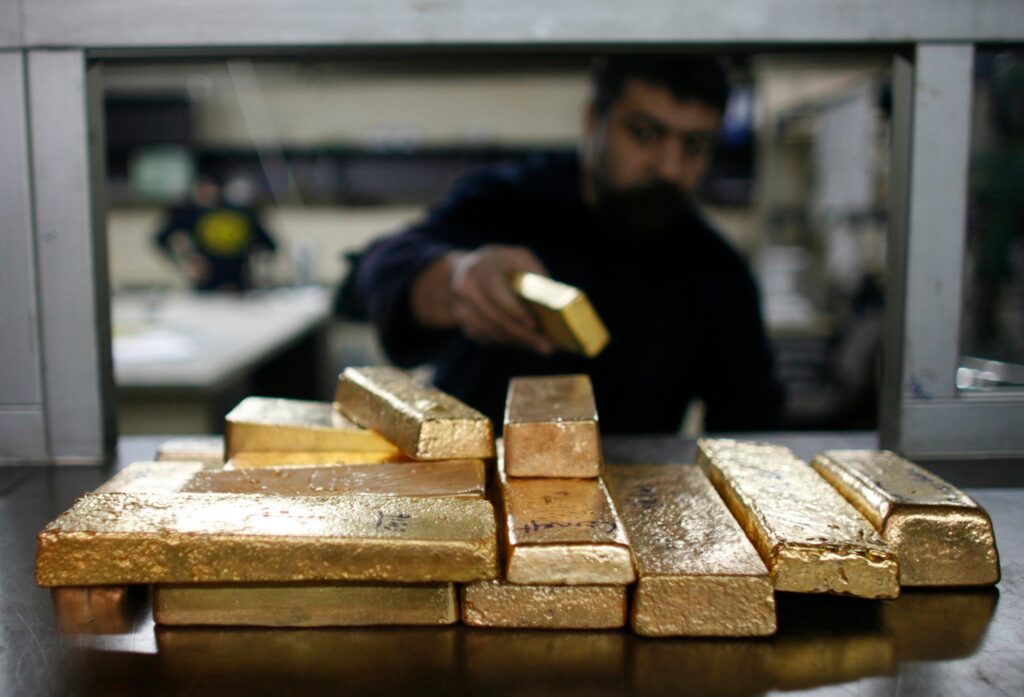
Osman Orsal/Reuters
All-time high price for gold
Rally of 18% so far this year
Prices expected to keep rising
Gold soared to an all-time high of $3,128.06 per ounce on March 31, as investors seek refuge from escalating geopolitical tension, unpredictable trade policies and a shifting monetary landscape.
Gold has rallied more than 18 percent so far this year but analysts say that there is still room to run. A range of factors lies behind this historic climb – from central banks stockpiling bullion at record levels to renewed fears of stagflation – raising questions about whether investors should hold, buy or take profits.
A resurgence of US trade tariffs (including a proposed 25 percent levy on foreign auto imports) has injected fresh volatility into global markets. President Trump is due to make more tariff announcements this week. This has sent investors scrambling for the safe-haven asset, the analysts say.
According to Ole Hansen, head of commodities strategy at Saxo Bank, gold thrives in an environment where economic stagnation collides with persistent inflation – a scenario now looming as trade wars escalate.
“The prospect of a tariff-driven economic slowdown in the US, combined with rising inflation, has heightened fears of stagflation – historically a gold-friendly environment,” Hansen tells AGBI. “The market remains supported by strong haven demand amid tariff concerns, sustained central bank buying – particularly in Asia – and renewed interest in bullion-backed exchange-traded funds [ETFs] from institutional investors.”
Michael Widmer, head of metals research at Bank of America Global Research, highlights a shift in global reserve strategies, as central banks – particularly in emerging markets – accelerate moving reserves away from the dollar. This structural demand, he argues, could propel gold to $3,500 per ounce within two years, even if traditional drivers such as inflation cool.
Widmer says that because the US is seeking to balance its external accounts – reducing its trade deficit – fewer dollars are circulating globally, making it more difficult for central banks to maintain high US dollar reserves.
“This creates an incentive to diversify reserves, with gold emerging as a key alternative,” Widmer says.
Meanwhile, ongoing conflicts – including US military strikes against the Houthi rebels disrupting Red Sea shipping routes – have amplified gold’s appeal as a hedge against volatility.
But the rise in prices is not just about fear; it is also about opportunity. The Federal Reserve’s hesitation in cutting interest rates, combined with hints at future easing by Jerome Powell, the chairman, has weakened the US dollar, making gold more attractive to foreign buyers.
Dubai could capitalise
Dubai’s Dubai Multi Commodities Centre has emerged as one of the world’s main gold trading centres. According to a DMCC report last year, the UAE leapfrogged the UK in 2023 to become the second-largest gold trade hub, with more than $129 billion in total trade – a 36 percent annual increase.
The emirate accounts for 15 percent of worldwide gold trade, with the majority flowing through DMCC.
The UAE’s trading system, combined with its location, has made it a magnet for bullion flows.
Vijay Valecha, chief investment officer at Dubai-based Century Financial, says that physical gold demand in Dubai is robust, driven by seasonal buying for Eid al-Fitr and Akshaya Tritiya. Meanwhile, institutions with bases in the UAE are snapping up mining assets, including gold mines across Africa.
Valecha says that a number of buyers in the emirate who trade in gold ornaments have benefited from a $400 per ounce price increase over the last three months.
“This trend underscores a strategic shift, as consumers seek to upgrade and expand their holdings in an appreciating asset,” Valecha says.
For investors, the question is not whether to hold gold – it is how much.
The risks – a Fed delay in cutting rates or a sudden surge in real yields – could trigger short-term dips, but the long-term trajectory is likely to continue upward.



